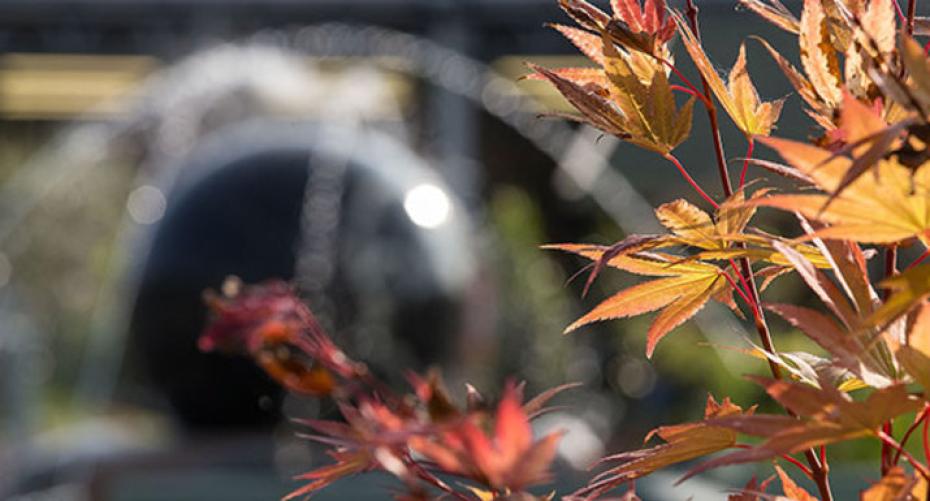Red, orange and gold leaves in autumn are one of natures spectacles
Most deciduous trees and some shrubs turn gorgeous shades of red, orange and yellow in the autumn just before they shed their leaves. As winter draws in the tree needs to conserve energy so pumping much needed nutrients to leaves is not viable. As the days become shorter there is not enough sunlight and moisture for the tree to carry on producing chlorophyll, which is responsible for the green colour in the leaves. The best weather for producing a spectacular autumn display is warm, sunny days and cold nights. Too hot, too cold or too wet doesn’t make for a vibrant display. If the weather is too dry the display doesn’t last as long as the leaves tend to dry out and fall off faster. In the northern hemisphere the show takes place from late September to early November and from April to May in the southern hemisphere.
Plants take in water through their roots and sunlight through their leaves, each leaf acting like a mini solar panel. This water and sunshine is then turned into oxygen and sugar, this process is called photosynthesis and the chlorophyll aids this process. The sugar is the carbohydrate which the plant needs to grow, produce flowers and fruit. In winter the days are too short to produce enough sunlight to carry out photosynthesis so the supply of sap is cut off to the leaves. The plant produces a corky layer at the base of the leaf stalk, once this is complete the leaf drops off. Some trees hang onto their leaves until new growth begins in the spring. Shedding leaves helps the tree use as little energy as possible through the winter.
The yellow and orange colours are produced by carotenoids which are present in the plant all year round but only become visible when the green chlorophyll stops being produced. These carotenoids are present in a lot of organisms including canaries, egg yolk and carrots. The red and purple colouring comes from compounds called anthocyanins which are only produced by certain trees in autumn. They allow the plant to recover any nutrients left in the leaves before they fall off; as many nutrients as possible are needed to see the plant through the winter and kick start spring growth.
The shedding of leaves is essential to the cycle of life in a broadleaved forest. The leaves replenish the humus and the nutrient levels in the soil as they are broken down by earthworms, fungi, bacteria, insects and other organisms. These organisms provide a food source for other insects higher up the food chain which in turn provide food for birds which in turn provide a huge amount of enjoyment for nature lovers.
Best trees for autumn colour:
- Acer japonica (Japanese Maples), range of autumn colours from lemon to darkest red
- Cercidiphyllum japonicum (Katsura Tree,) also smells of candy floss in autumn
- Euonymus elatus, lovely lipstick pink/red
- Euonymus europaeus (Spindle), also has gorgeous pink and orange berries
- Liquidamber straciflan (Sweet Gum), one of the best for autumn colour with variations of colour on the same tree
- Sorbus aucuparia (Rowan), lots of varieties with a lot of autumn interest with berries and red/orange leaves
Best places to see autumn colour:
- Bodnant Gardens, Colwyn Bay, Wales
- Faskelly Woods, Pitlochry, Perthshire, Scotland
- Fountains Abbey, Ripon, North Yorkshire
- Grizedale Forest, Hawkshead, Lake District
- Kew Gardens, London
- New Forest, Hampshire
- Westonbirt Arboretum, Tetbury, Gloucestershire
For more information, hints and tips on growing trees and shrubs just get in touch with our gardening team in the Outdoor Plant department here in store.


